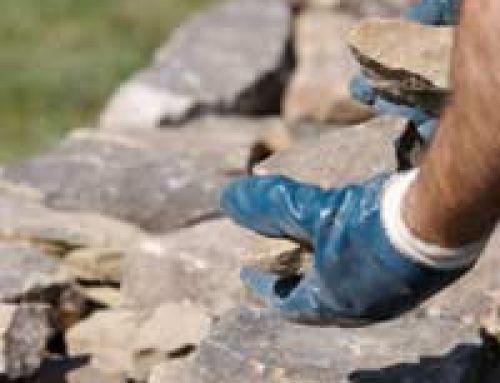 Stone has been used as a building material for thousands of years. It has long been recognised as a material of great durability and superior artistic quality, the foremost choice for buildings associated with status, power and religion. The pyramids in Giza, burial chambers in the UK and temples in Malta were all built from stone over 4000 years ago and are still standing. The use of stone in construction has declined over the last hundred years, but it remains an aristocrat of building materials.
Stone has been used as a building material for thousands of years. It has long been recognised as a material of great durability and superior artistic quality, the foremost choice for buildings associated with status, power and religion. The pyramids in Giza, burial chambers in the UK and temples in Malta were all built from stone over 4000 years ago and are still standing. The use of stone in construction has declined over the last hundred years, but it remains an aristocrat of building materials.
Types of Building Stone
Building stone, also called dimension stone, derives from one of three naturally occurring rock types:
There are huge variations within each of these rock types, caused by specific mineralogy and geology conditions, and while any stone can be used for building, they each have constraints that make them more or less suitable for different purposes. Granite, sandstone and limestone can all be used for building walls, but slate is only suitable for roofs and floors. Some types of granite can contain mineral salts that cause spalling, where the outer face of stone falls off; slate can contain harmful minerals that break down on exposure to the atmosphere causing stone damage; and sandstone can be too porous and fragile for load-bearing structures. An understanding of how the rock material was formed will reveal how it can be used in a building, what its limitations are, and how it will weather over time.
Dry Stone Stacking
The earliest form of stone construction is known as dry stone, or dry stacking. These are freestanding structures such as field walls, bridges and buildings that use irregularly shaped stones carefully selected and placed so that they fit closely together without slipping. Structures are typically wider at the base and taper in as height increases. The weight of the stone pushes inwards to support the structure, and any settling or disturbance makes the structure lock together and become even stronger. Dry stone structures are highly durable and easily repaired. They allow water to drain through them, without causing damage to the stones. They do not require any special tools, only the skill of the craftsman in choosing and placing the stones.
Stone Masonry
Traditional stone masonry evolved from dry stone stacking. Stone blocks are laid in rows of even (courses) or uneven (uncoursed) height, and fixed in place with mortar, a cement or lime mixture pasted between the stones. The building stones are normally extracted by surface quarrying, drilled and split using diamond saws or iron wedges, and then shaped and polished according to their requirements. The basic hand tools used to shape stones are chisels, mallet and a metal straight edge, but modern power tools such as angle grinders and compressed air-chisels are often used to save time and money. Stones are either shaped (dressed) into a block, known as ashlar masonry, or left rough and cut irregularly, known as rubble masonry. Mortared stone structures are less durable than dry stone, because water can get trapped between the stones and push them apart.
Traditional stone masonry is rarely used today, because stone is expensive to quarry, cut and transport, and the building process is labour and skill-intensive. Instead, most modern stonework utilises a veneer of stone (thin, flat pieces) glued against a wall of concrete blocks. This is known as veneered stone or stone cladding.
Slipform stone structures are a cross between veneered masonry and traditional masonry. Short forms (around 2 feet tall) are placed on either side of the wall, to serve as a guide for the structure. Stones are placed inside the forms with the flat face out, and concrete is then poured behind the rocks to hold it together. Stone buildings can be constructed quickly and easily with this method.
Sustainable Stone
Stone is a highly durable, low maintenance building material with high thermal mass. It is versatile, available in many shapes, sizes, colours and textures, and can be used for floors, walls, arches and roofs. Stone blends well with the natural landscape, and can easily be recycled for other building purposes. But is stone a sustainable building solution? There are currently over 400 building stone quarries in the UK, more than enough to meet current demand, but with a growing influx of cheap, imported stone and synthetic imitations, the industry is under threat. To meet sustainability standards, steps must be taken to ensure that the stone is found on site, reclaimed from nearby demolished buildings or sourced from a local stone quarry. Only then can stone be considered a true example of a sustainable building material.





If you think slate is not good for walls you should visit Wales and Cumbria in the UK. Slates from both regions have been used on all kinds of buildings as walls. Last year Welsh slate from Penrhyn quarry was used to clad the new Welsh Assembly buildings in Llandudno. Before that it was used on the walls as well as for flooring and paving on the Welsh Assembly parliamentary building in Cardiff Bay and on the neighbouring Opera House, where it has been stacked to resemble the traditional dry stone walling that slate has been used for for centuries. It is also used as tiles for interior walls and many a shower and wet room is clad in it as well as having it on the floor. British slate, at least, is extremely low porous (less than 0.03%) and makes ideal shower trays and worktops, cladding, lining paving, roofing and just about any other product that can be made of stone.
You also say sandstone can be too porous and fragile for load-bearing structures, but that certainly is not typical. Whole cities in the North of the UK have been built using large quantities of sandstone (from Leeds and York to Edinburgh and Glasgow) in buildings that are still standing and looking superb after centuries. It is because sandstone is strong and resilient to weathering that is widely used for paving – go outside in almost any UK city (including London) and you will find sandstone paving in important areas.
which environment of formation can granites be formed to make it suitable for construction considering that its feldspartic content makes the rock susceptible for weathering?can granites be used for the construction of bridges and dams?
Reclaiming stone for buildings has been going on since Roman times. After they left, the people who remained used the stone from their buildings, and that recycling has gone on ever since. In the Middle Ages in York they even had to pass a law to stop people doing it too much; it’s nothing new!
I agree with the notion that stone is most sustainable material like soil in terms of reuse. My concern is the depletion of natural resources and environmental degradation due to exessive amount of stone quarrying process. I have experienced in Gilgit, Pakistan that because of iregular stone quarrying and removal of supporting rocks land subsiding occured.
I think stone has been used and is using in the current construction of buildings in the world but the best of sample of stone work is Egypt pyramid.And thanking a lot bout your good website.
Thanks for the compliments about the site.
To see the best stone construction must to visit Maharashtra forts in india
summary of materis required for stone house.mention please
I’m looking for advice on a project I’m doing as part on an MSc course. We have to propose plans to extend the height of an existing cobble walled barn, to provide an additional storey for a barn conversion. From the details I have, the existing walls are solid and approximately 360 to 400mm thick. To extend the height of the wall, I’m assuming that a similar solid construction should be used and not some form of modern cavity with stone external facing? Has anyone got any suggestions? I’ve also found conflicting advice on insulation techniques for an old solid wall barn. Anything from leave alone (as you’ll alter the behaviour of the building to insulate on the internal face with something like wood fibre boards and breathable lime plaster..Again looking for some advice. Regards. Paul.
hi i have just applied to brick up a doorway of our house and the house is built of stone can anyone tell me where i can get stone from that will match like for like.i have looked on line and stones have different name and Yorkshire stone come up a lot but i do not know what stone was used to build our property i know its over a 100 years old, the house is in Darwen Lancashire can anyone one help
It might be worth visiting a reclaimation yard or stone merchants for a chat. We found this Document about Lancashire Building stone that describes the different stone used in the county in various areas and periods – it includes photos. It may not be what you needed but it certainly makes interesting reading!
am architecture from Egypt , i create my own stone construction method , i named it (interactive architecture ) its the revolution in stone housing construction , its a unique vision for either construction & finishing & heat isolation ….. i built my own prototype as my office, now i try to publishing my method …. if you are interest , just mail me regards …………
Hello. I’m a stone builder from Argentina. I built two houses on my own using limestones, or granite limestones. I’m not good at classifying stones, sorry. We just call them quarry stones out there. Mostly, I didn’t dress the stones… I just listen to the stones and place them where they want to go, metaphorically speaking or not… What I mean is that those are very hard and brittle stones and it would take a long time to work them. Well, the thing is that I’m looking for temporary work and would appreciate some advice. Apart from that, I found this site very interesting. Good work! Congratulations!
Hi.i have a question ….Sketches the constraction techiniques of stones wall
Is the porous nature of sandstone harmful as a building material in dusty regions like gujarat in India?
We have uncovered granite stones (not flagstones as I understand, as they have one flat surface and the bottom surface is v-shaped) in our house which we are going to re-lay above underfloor heating. We are also going to standardise their depth. My question is how to clean them? There seems to be soot on them, which makes sense as the nearby manor house had a fire in days-gone-by and we wonder if they originated from there… Any advice would be most welcome. Thank you.
Is the wastage of remaining stone is used for recycling if used where it is useful nd what is the process
It is worth remembering that the villages of Groby and Swithland in North Leicestershire are on slate outcrops. Groby slate was used by the Romans for roofing buildings throughout the Midlands area. Swithland slate drawn from a wooded area became available circa 1650. “The Leicestershire slate industry from Roman times to 1908” ISBN 978-0-9556445-0-4 First published 2007 – Revised 2019 Leicestershire Industrial History Society Secretary, David Lyne – 0116 2919706
You’re wrong by saying slate is only suitable for roofs and floors. I build with slate stone all the time. Local Cornish quarrys have a many different types and they are all suitable for house building.